This month we take a look at a garden book from a few different perspectives. Three of our reviewers from Garden Therapy Book Club join us to share their thoughts on The Year-Round Vegetable Gardener: How to Grow Your Own Food 365 Days a Year, No Matter Where You Live.
Sam Philips is a partner of Victory Gardens, a Vancouver, BC, business who helps people grow their own food! The team at Victory Gardens looks forward transforming front yards for food production, facilitating dynamic workshops, such as: “Grow Your Own Pizza”, providing education and planning tools for the new urban farmer to grow what they eat and much more. Grow what you eat!
Mimi is a novice urban gardener living in a New York City borough, documenting her adventure in gardening at gardening in the boroughs of nyc. She gardens by trial and error, seeing what works and what doesn’t and learning from her failures. Her goal is to grow her own organic vegetables, fruit, plants, trees and flowers and try to recycle, re-use, conserve wherever she can.
Zoe is a full time job is a Dietitian, but her full time love is crafting, sewing, quilting and creating beautiful handcrafted items. She has a passion for home cooking and growing food to eat from her own garden in Kansas. She writes about it all at Scout’s Stitches.
~
Overview of The Year-Round Vegetable Gardener
Sam: Based off of the Nova Scotia coast, Niki Jabbour has written a comprehensive guide to year-round gardening that can be utilized by gardeners from an array of geographical regions. This book is useful to not only the beginner gardener, but also an experienced gardener who perhaps hasn’t fully delved into winter gardening. The Year-Round Vegetable Gardener stresses not only methods for winter gardening, but how to utilize row covers and cold frames to get a jump on warm-season crops as well. Niki Jabbour covers planting successively, intensive gardening, and crop rotation in an easy to understand way.
First Impressions
Zoe: I liked the book. It presented the information in an organized way and explained the advantages and disadvantages of the different devices used to extend the growing season. Even for someone who is not quite ready to commit to year round gardening there was a lot of useful information. Some of the sections I found most useful were planting techniques to improve your harvest, crop rotation maps, and the section that looked at what varieties of vegetables thrive better in cool or warm seasons.
Sam: While I must admit that the cover is not the most eye-catching, some of the photos inside the book are quite stunning; one photo that stands out for me is an image of freshly harvested, dirt-covered carrots lying on a bed of white snow. It conveys bounty even when it’s barren outside.
Sam: The layout is very comprehensive, which is integral. My personal favorite was Niki’s chart on successive planting. The chart lays out the crops’ average days to harvest, if the crop is a repeated or single harvest, planting season, time between plantings, and type of succession planting. Planting successively and timing is the key to consistent harvest!
Cold Climate Gardening
Mimi: I’ve been gardening in the boroughs of New York City for the last 3 years and I often wondered how I could keep growing vegetables well into the late fall and winter. Upon reading the book, I was so impressed with the techniques that Niki was using to extend her growing season. She gardens far North of me, in Nova Scotia, Canada, and she was harvesting cool weather vegetables well into the snowy winter. If she can do it that far north, I figured I have no excuse not to do it in zone 7. Some of the techniques she uses to protect plants from the cold weather elements are row covers, cloches, cold frames, mini hoop tunnels, and greenhouses. Many of the techniques are inexpensive and easy.
Sam: Gardening throughout the colder season has its advantages; for example, Niki Jabbour points out that there are fewer pests to contend with. What’s the biggest advantage to cold season gardening? Having the gratification of harvesting beautiful greens out of a cold frame for dinner in the winter! Niki is a VERY productive gardener. Not only this, she takes the steps to making it easy for her readers.
Zoe: There are many things I learned from this book. Some of the main things I will be paying more attention to in the future is using cloches or water filled cloches on my early planted tomatoes and peppers in case there is a late frost. We have had it happen a couple years where we planted early and then a late frost killed all of our tomatoes. Another tip from the book was to pay attention to which varieties of plants are bred to grow better in cool ground versus warm ground. This is something I will start to pay attention to so that I can maximize harvest in whichever season I am growing.
Project: Interplanting (p. 30) rating: TBD
Zoe: I didn’t technically try “a project” from the book, as we have been working on one major project for the garden this spring- a beautiful fence to keep the deer out!

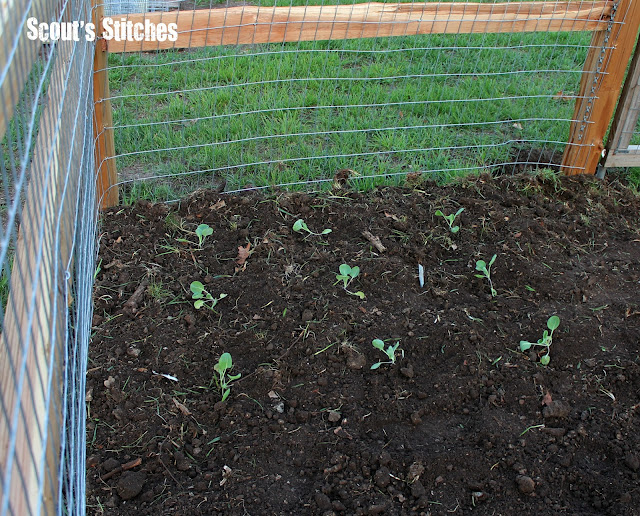
Project: Hoop House (pg. 36) rating: 5/5
Sam: I wanted to speed up the germination of my arugula, mustards, radishes and lettuces, so I made hoop houses over my raised beds. All it took was some rebar (4 staked on the edges per side of a 4 by 6 bed), 4 pieces of ¾” PVC conduit piping cut to my desired length that I fit over top, and some row cover that I stretched over top and weighted down with rocks. The reason I used row cover is because the rainwater can get through, there is good moisture retention, and there is still good air circulation.
Niki notes that you can use the row cover on its own, laying it over your crops with enough slack for growth, but I like the aesthetic of a neat hoop house. Also, depending on the season, I can swap the row cover for a warmer poly. Some more delicate crops also get “chafed” if the row cover is laid on top of them. Remember to install a hoop house long before insects will be a problem, and secure the bottom tightly so they can’t creep on through. The hoop house not only speeds up germination by increasing the temperature 2 degrees Celsius, it keeps out the birds!
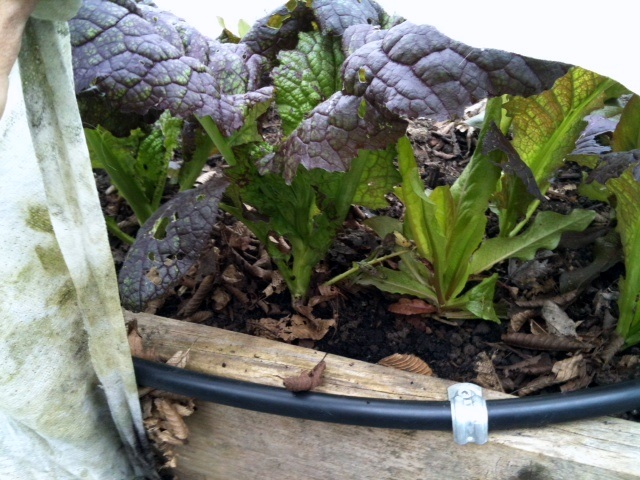
~
Project: Cloches (p. 42) rating: 5/5
Mimi: An easy technique that Niki uses are cloches, which are dome shaped mini greenhouses that you put over individual plants, often made from plastic or glass. You can buy fancy cloches, but an inexpensive DIY method is to re-use plastic juice bottles, soda bottles, milk containers or dome shaped food containers like the kind you get with a rotisserie chicken take-out.
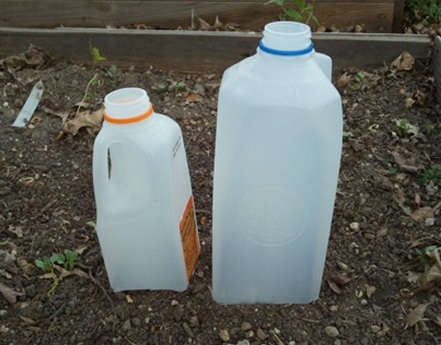
~
Project: Cold-Frame (p. 45) rating: 5/5
Mimi: The one technique that I was most interested in was the cold frame. In Niki’s book, starting on page 45, she describes different types of cold frames from portable to permanent structures. Since I already have raised beds in the garden, I simply added the window frame on top of the raised bed so that it could insulate the bed and trap in the sunlight to warm up the soil and seedlings.
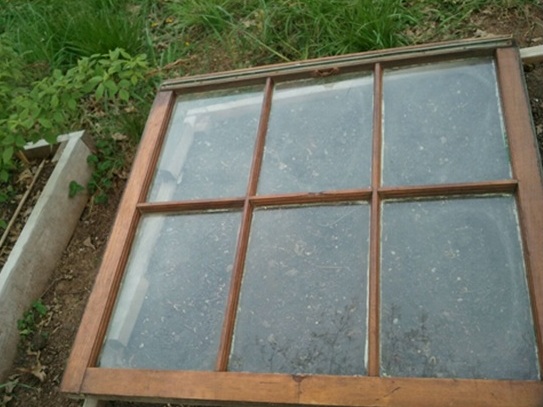
During mid-day when the sun is out, you can prop the window open to allow for some ventilation. It’s also great if you put a hinge on the edge of the window and box to secure the window in place and to allow you to easily open and close it.

~
I’m so grateful and honoured that these amazing ladies took the time to share their thoughts on the book and show off some of the projects they tested. They have collectively given us a thorough idea of the sheer amount of great information in The Year-Round Vegetable Gardener and some insight as to the kind of projects you can expect.
To learn more about how Sam can help you Grow What You Eat! please visit Victory Gardens for personalized help with starting your very own veggie garden no matter what space you have. They will even send you reminders on when to plant veggies by e-mail!
To check out the eco-conscious Mimi in her quest for a greener 2012, visit her at gardening in the boroughs of nyc and revel in all her great ideas on how to reduce her carbon footprint. She is such an inspiration!
To follow the wildly creative Zoe in her crafty adventures, make sure you check out her blog, Scout’s Stitches. From April 25-30 be sure to check out How Does your Garden Grow gardening series with a special guest post from yours truly.
Want to win a copy of The Year-Round Vegetable Gardener? Enter by leaving a comment below before April 25. Get bonus entries by tweeting this post or sharing on Facebook and coming back here to let us know you did. Contest now closed. Congratulations to the winner: George!

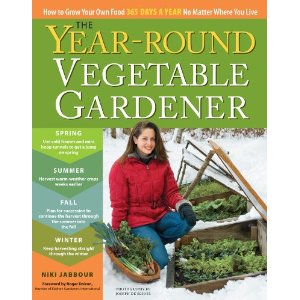



I have gardened for years and have yet to figure out how to do it year-round!